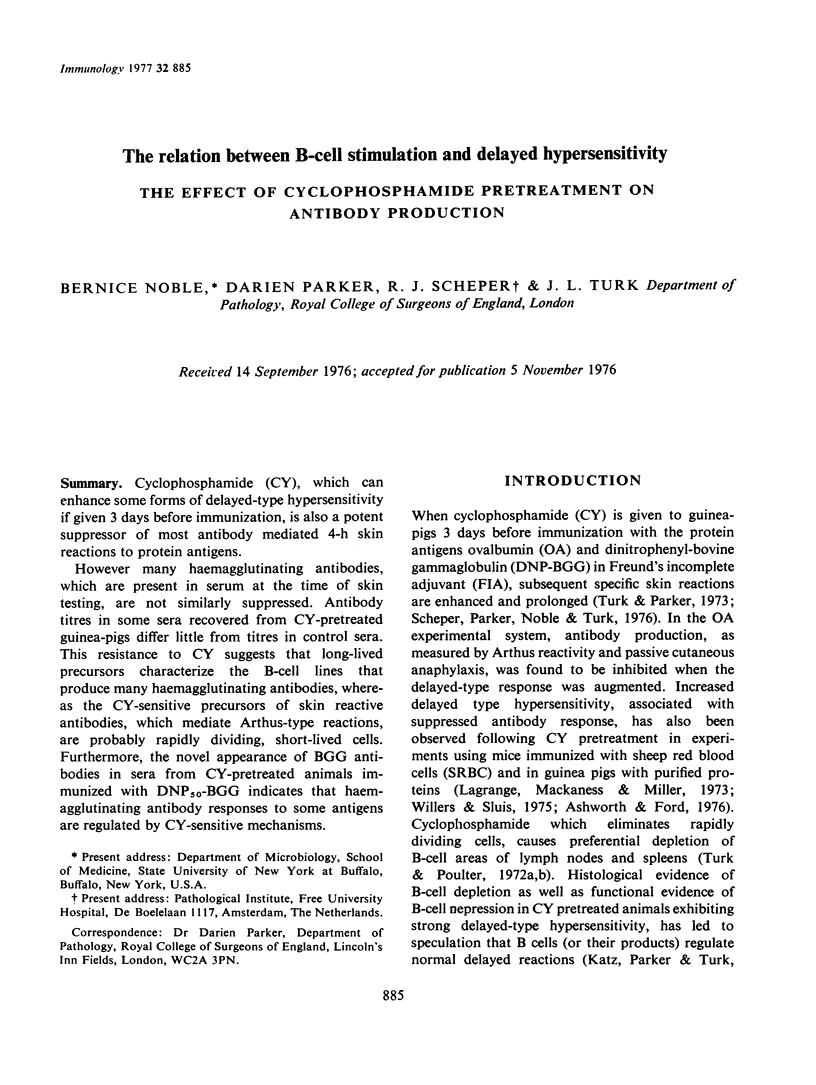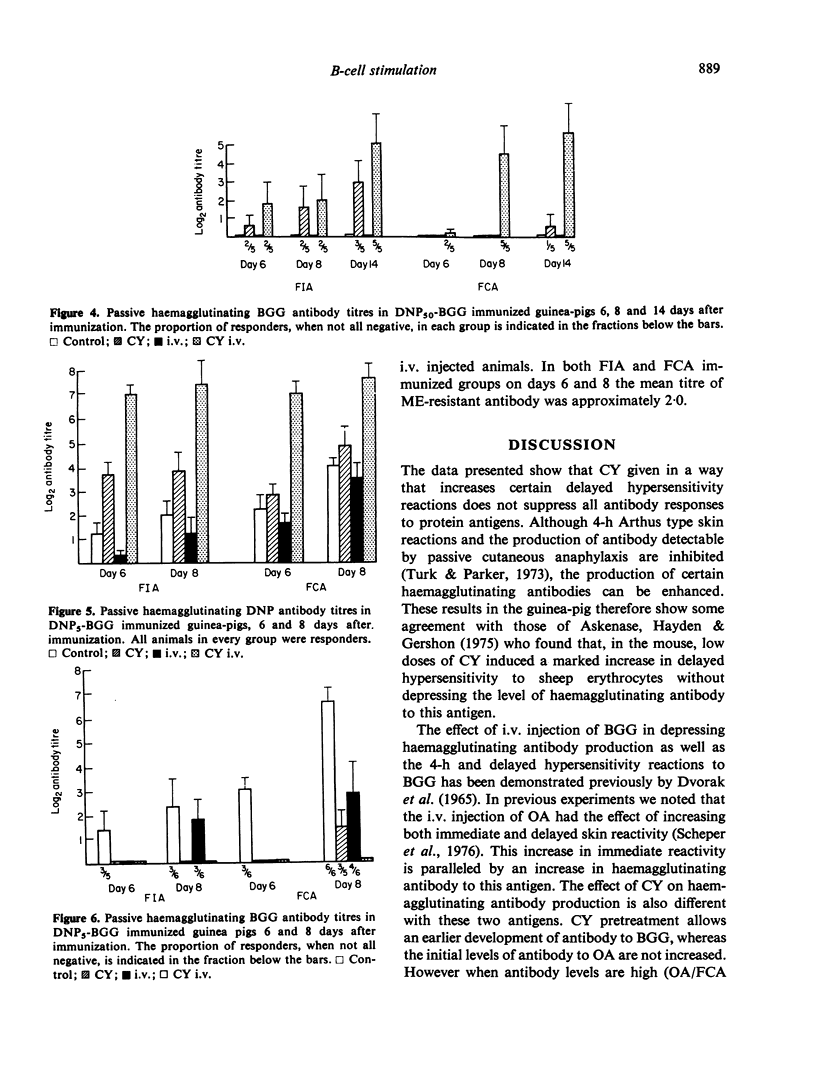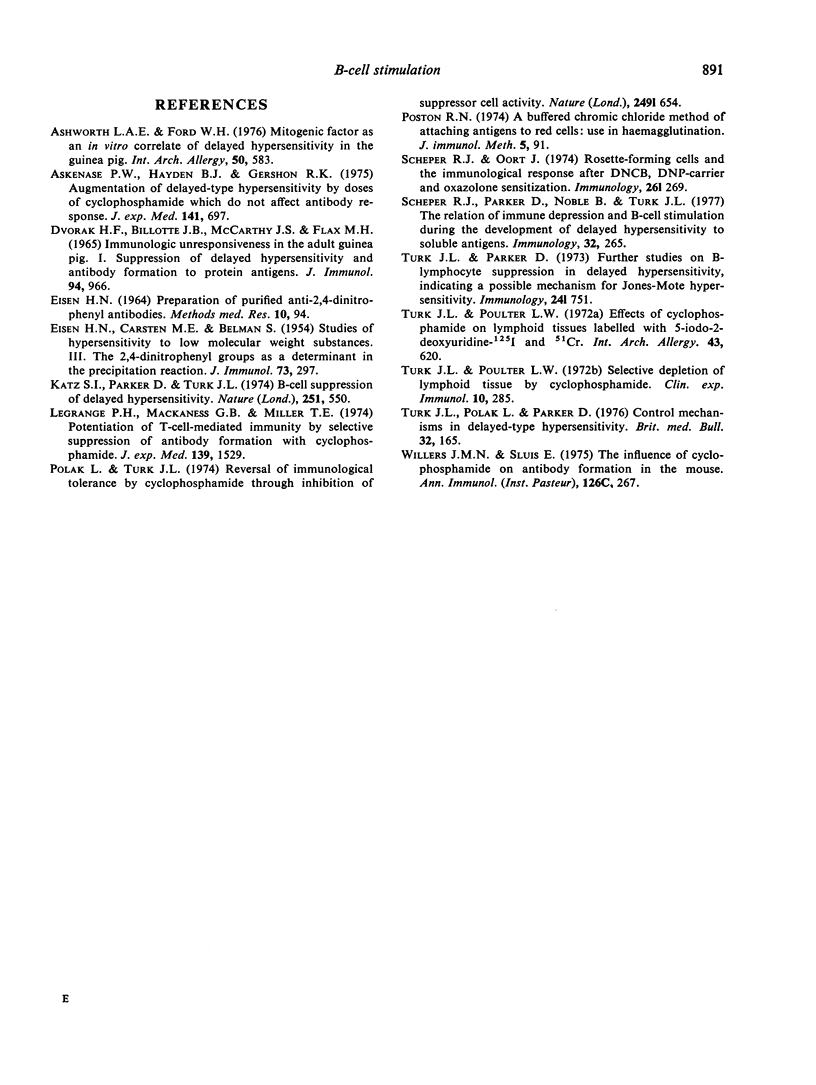Abstract
Cyclophosphamide (CY), which can enhance some forms of delayed-type hypersensitivity if given 3 days before immunization, is also a potent suppressor of most antibody mediated 4-h skin reactions to protein antigens. However many haemagglutinating antibodies, which are present in serum at the time of skin testing, are not similarly suppressed. Antibody titres in some sera recovered from CY-pretreated guinea-pigs differ little from titres in control sera. This resistance to CY suggests that long-lived precursors characterize the B-cell lines that produce many haemagglutinating antibodies, whereas the CY-sensitive precursors of skin reactive antibodies, which mediate Arthus-type reactions, are probably rapidly dividing, short-lived cells. Furthermore, the novel appearance of BGG antibodies in sera from CY-pretreated animals immunized with DNP50-BGG indicates that haemagglutinating antibody responses to some antigens are regulated by CY-sensitive mechanisms.
Full text
PDF






Selected References
These references are in PubMed. This may not be the complete list of references from this article.
- Ashworth L. A., Ford W. H. Mitogenic factor as an in vitro correlate of delayed hypersensitivity in the guinea pig. Int Arch Allergy Appl Immunol. 1976;50(5):583–592. doi: 10.1159/000231562. [DOI] [PubMed] [Google Scholar]
- Askenase P. W., Hayden B. J., Gershon R. K. Augmentation of delayed-type hypersensitivity by doses of cyclophosphamide which do not affect antibody responses. J Exp Med. 1975 Mar 1;141(3):697–702. doi: 10.1084/jem.141.3.697. [DOI] [PMC free article] [PubMed] [Google Scholar]
- DVORAK H. F., BILLOTE J. B., MCCARTHY J. S., FLAX M. H. IMMUNOLOGIC UNRESPONSIVENESS IN THE ADULT GUINEA PIG. I. SUPPRESSION OF DELAYED HYPERSENSITIVITY AND ANTIBODY FORMATION TO PROTEIN ANTIGENS. J Immunol. 1965 Jun;94:966–975. [PubMed] [Google Scholar]
- EISEN H. N. PREPARATION OF PURIFIED ANTI-2,4-DINITROPHENYL ANTIBODIES. Methods Med Res. 1964;10:94–102. [PubMed] [Google Scholar]
- Katz S. I., Parker D., Turk J. L. B-cell suppression of delayed hypersensitivity reactions. Nature. 1974 Oct 11;251(5475):550–551. doi: 10.1038/251550a0. [DOI] [PubMed] [Google Scholar]
- Lagrange P. H., Mackaness G. B., Miller T. E. Potentiation of T-cell-mediated immunity by selective suppression of antibody formation with cyclophosphamide. J Exp Med. 1974 Jun 1;139(6):1529–1539. doi: 10.1084/jem.139.6.1529. [DOI] [PMC free article] [PubMed] [Google Scholar]
- Polak L., Turk J. L. Reversal of immunological tolerance by cyclophosphamide through inhibition of suppressor cell activity. Nature. 1974 Jun 14;249(458):654–656. doi: 10.1038/249654a0. [DOI] [PubMed] [Google Scholar]
- Poston R. N. A buffered chromic chloride method of attaching antigens to red cells: use in haemagglutination. J Immunol Methods. 1974 May;5(1):91–96. doi: 10.1016/0022-1759(74)90050-7. [DOI] [PubMed] [Google Scholar]
- Scheper R. J., Oort J. Rosette-forming cells and the immunological response after DNCB, DNP-carrier and oxazolone sensitization. Immunology. 1974 Feb;26(2):269–280. [PMC free article] [PubMed] [Google Scholar]
- Scheper R. J., Parker D., Noble B., Turk J. L. The relation of immune depression and B-cell stimulation during the development of delayed hypersensitivity to soluble antigens. Immunology. 1977 Feb;32(2):265–272. [PMC free article] [PubMed] [Google Scholar]
- Turk J. L., Parker D. Further studies on B-lymphocyte suppression in delayed hypersensitivity, indicating a possible mechanism for Jones-Mote hypersensitivity. Immunology. 1973 Apr;24(4):751–758. [PMC free article] [PubMed] [Google Scholar]
- Turk J. L., Polak L., Parker D. Control mechanisms in delayed-type hypersensitivity. Br Med Bull. 1976 May;32(2):165–170. doi: 10.1093/oxfordjournals.bmb.a071350. [DOI] [PubMed] [Google Scholar]
- Turk J. L., Poulter L. W. Effects of cyclophosphamide on lymphoid tissues labelled with 5-iodo-2-deoxyuridine- 125 I and 51 Cr. Int Arch Allergy Appl Immunol. 1972;43(4):620–629. doi: 10.1159/000230874. [DOI] [PubMed] [Google Scholar]
- Turk J. L., Poulter L. W. Selective depletion of lymphoid tissue by cyclophosphamide. Clin Exp Immunol. 1972 Feb;10(2):285–296. [PMC free article] [PubMed] [Google Scholar]
- Willers J. M., Sluis E. The influence of cyclophosphamide on antibody formation in the mouse. Ann Immunol (Paris) 1975 Apr;126(3):267–279. [PubMed] [Google Scholar]


